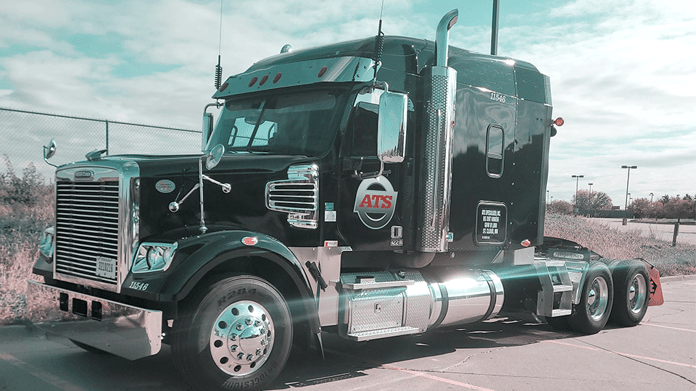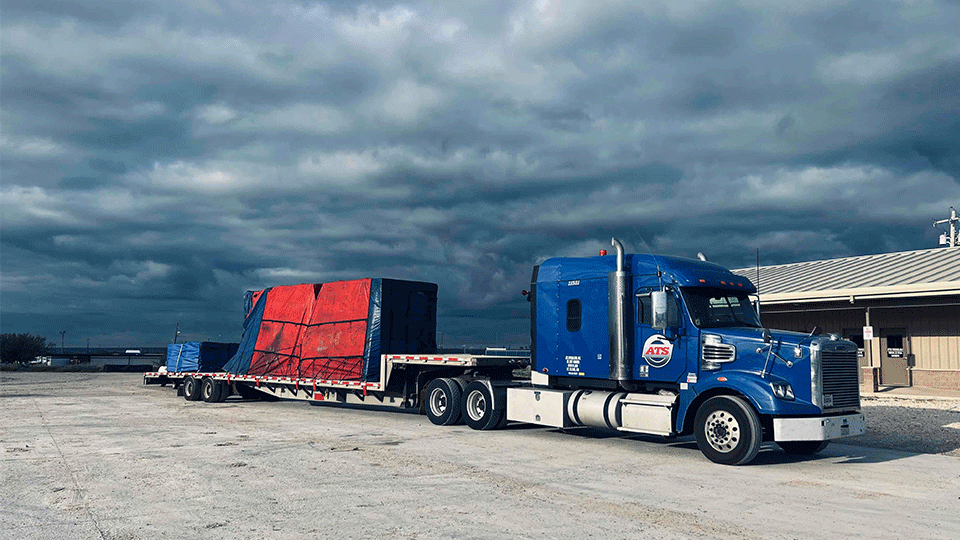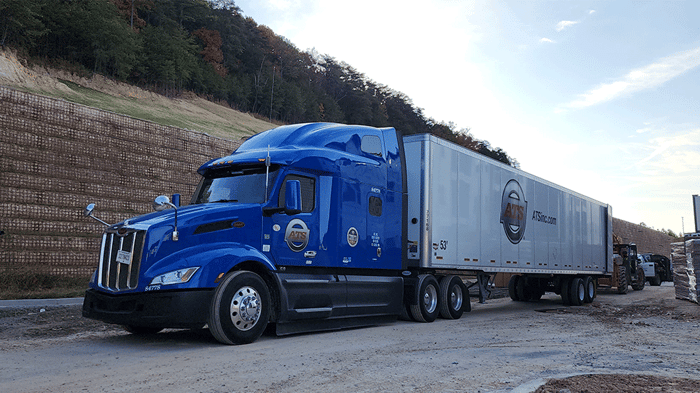Nobody, in any industry, relishes uncertainty. Conducting business (for all parties) is more comfortable in a marketplace that’s stable, predictable and calm. With stability comes peace of mind and security. Without it, tough decisions surface regularly, testing those in positions of influence — positions like yours.
As a logistics professional, you’re no stranger to turbulence. Accomplishing your daily tasks and keeping your company’s transportation supply chain afloat takes many things: a robust understanding of market forces, a reliable group of carriers, a well-formulated strategic plan and (perhaps most importantly) agility.
Over the past three years (or so), your logistics team has been tested in a number of unique ways. These trials, in the form of unpredictable freight rates and capacity scarcities, haven’t always been comfortable. But you’ve gotten through them.
As we head toward a new year, now is the time to start planning for what it might bring. Will you need further fortification in the months ahead? Or, will things start to turn around? Spot rates have been falling recently, will they continue this trend?
Here at Anderson Trucking Service (ATS), 2023 will be our 68th year in the transportation industry. For nearly seven, count ‘em, seven decades, ATS’ teams have worked alongside businesses like yours to ensure the smooth facilitation of their supply chains.
That said, over this time, no period has been more intriguing than the past few years.
To help shippers navigate the twists of 2020, the turns of 2021 and the peaks and valleys of 2022, we released market updates outlining what (in our estimation) is influencing the industry we call home. This article will provide similar insights.
Together, we’ve weathered a lot over the last 36 months. 2023 promises more tests for transportation companies and shippers. So, to help you get the most from your supply chain going forward, below you’ll find an overview of:
- 2 major issues facing the transportation industry
- Key trends to note heading into 2023
- Where the 4 indicators of transportation’s overall health currently sit and where they’re going
- 3 tips for managing your transportation logistics going forward
2 Major Issues the Transportation Industry is Currently Facing
Transportation companies, like any other business, are affected by changes in the world. As we wrap up 2022, two issues are impacting the transportation industry and the companies within it more than others:
- The turbulent and uncertain U.S. economy
- An ongoing truck shortage
Together, the current economic climate and the relentless shortage of semi trucks are leaving a disproportionate impression on the transportation world. Let’s talk about how.
1. The Unpredictable U.S. Economic Situation
Wide spread inflation is always a concern for U.S. citizens and economic leaders.
Throughout 2022, however, all eyes have been focused in this direction as the U.S. economy fights to overcome disruptions caused by COVID-19, global conflict and prolonged supply chain congestion.
According to the Bureau of Labor Statistics, at the end of September 2022, the Consumer Price Index for All Uban Consumers (CPI-U) sat at an unadjusted 8.2 percent increase over a 12-month period.
This increase, reflecting the rise in cost for “all products,” represents a meaningful change in the health of the U.S. economy. The CPI-U is based on the prices paid by 93 percent of U.S. consumers. For this reason, an 8.2 percent year-over-year increase affects everyone’s personal balance sheet.
But accelerating inflation in many categories (food, medical care, shelter, etc.) is only part of the story.
 Interest rate hikes, enacted to slow consumer spending and, by extension, inflation, are also leaving an impression on the U.S. economy. In November 2022, the Federal Reserve increased the federal funds rate by 75 basis points for the fourth straight quarter to 3.75-4 percent.
Interest rate hikes, enacted to slow consumer spending and, by extension, inflation, are also leaving an impression on the U.S. economy. In November 2022, the Federal Reserve increased the federal funds rate by 75 basis points for the fourth straight quarter to 3.75-4 percent.
With the goal of stifling inflation and returning it to 2 percent in the “long run,” the Federal Reserve stated in a press release that “ongoing increases in the target range will be appropriate,” indicating its latest quarterly rate hike won’t be the last.
The last time interest rates and inflation were at a similar level was in the early 1980s (‘80-’83), when unemployment skyrocketed and a severe recession ensued. Though our current situation is similar to the 1980s in many ways, employment levels (at the time of writing) remain far stronger today.
Transportation companies, like any other business operating in trying economic times, have had to navigate their fair share of turbulence over the past 12 months. Going forward, these struggles are likely to continue as the U.S., in all likelihood, enters a recession in 2023.
2. An Ongoing Semi-Truck Shortage
When the U.S. labor market came out of the 2020-21 COVID-19 pandemic, its participation rate was down significantly — with more than 3 million fewer workers.
A similar change in the composition of the national labor market was felt in many countries. This pressure, coupled with global supply chain congestion issues, has pushed semi-truck manufacturers behind the eight ball over the last three years.
Each year, the U.S. transportation industry requires an estimated 200,000-250,000 new vehicles to maintain an adequate age-of-fleet — retiring older vehicles in exchange for new ones.

In 2020 and 2021, truck manufacturers missed these replacement levels, forcing trucking companies to utilize older vehicles than they otherwise would. Consider that every year the average semi truck covers 80,000-100,000 miles and you can see why this is a pressing issue.
This year, manufacturers are on track to meet the transportation industry’s replacement demands. While this is a good sign, the current backlog of semi-truck orders is the largest recorded following a peak period; carriers typically expand their fleets when spot rates are high, but they were unable to do so this year.
Labor shortages and part supply issues are expected to keep semi-truck purchase prices high through 2023, forcing carriers to operate with an older average age of fleet than they’d otherwise like.
Key Trends to Note Heading into 2023
As we head into 2023, a couple of key trends will impact freight movement around the U.S.
In addition to the semi-truck shortage and the appearance of a recession on the horizon, the transportation environment will be influenced by:
- A change in consumer spending
- Parts and labor shortages
1. A Change in Consumer Spending
The way people spend their money drives the transportation world. And, as evidenced in our peak retail season market update, consumer spending patterns are starting to shift.
At the onset of the pandemic, the velocity at which consumers purchased durable goods spiked significantly, with eCommerce transactions setting all-time highs. In turn, this shift sent shockwaves through the transportation industry, requiring massive support from trucking companies and their drivers.
Recently, however, as a result of rising inflation and the absence of pandemic restrictions, consumer buying habits have shifted once again. This time, people are spending less money on durable products — products transported by semi-truck — and more on services/experiences.

In turn, spot rates (particularly in the dry van market) have started to fall as freight demand is outpaced by the supply of trucks. It’s difficult to predict whether this trend will continue into 2023 when consumers — who have been paying with credit at an accelerated rate — continue to feel the effect of inflation.
It’s likely that consumer spending will slow across the board in 2023, decreasing the transportation industry’s workload slightly and keeping spot prices low.
2. Parts and Labor Shortages
The limited availability of parts, equipment and labor continues to plague this industry. As a result, transportation companies continue to pay more to their employees and a premium to maintain their equipment.
To this point, these heightened expenses have trickled down to shippers, forcing spot rates to rise drastically over the past couple of years.
Although spot rates have been falling recently, the cost of maintaining equipment and paying drivers will continue to dictate their floor. And, as we head into 2023, expect these problems to linger.
The 4 Indicators of Transportation’s Overall Health: Where They Sit and Where They’re Going
If you’ve read any of our previous market updates, you know four of the indicators we use to gauge the state of the transportation industry are:
- The demand for transportation services
- The supply of transportation services
- The cost of providing transportation services
- The cost of procuring transportation services
Let’s continue by discussing where each of these indicators currently sits, and what may shape them in 2023.
1. The Demand for Transportation Services
The demand for trucking services is driven by multiple things. Prime among them is consumer spending. 2023 promises to be a year of continued inflation-busting by the Federal Reserve.
As the government continues this battle, it’s likely consumer purchasing of durable goods and housing will drop off. In turn, this may drive down the overall volume of freight needing to move and loosen up capacity across the board.

2. The Supply of Transportation Services
Trucking companies come in all shapes and sizes. From single-truck owner-operators to carriers outfitted with thousands of assets, there’s no shortage of options for businesses with freight to move.
Going forward, 2023 probably won’t bring an increase in the supply of transportation capacity.
Instead, should insurance, fuel and maintenance costs continue to rise, at the same time that demand falters, supply may shrink as smaller carriers struggle to make ends meet, forcing them to join more established fleets or leave the industry.
3. The Cost of Providing Transportation Services
Transportation companies have four major expenses to attend to. The realities of running a trucking company prevent them from escaping any one of them. As such, it’s important to understand the role they play in every transportation supply chain.
These four expenses are:
- Driver pay
- Fuel costs
- Insurance
- Fleet maintenance costs
Over the past year or so, the price of each of these has continued to rise beyond pre-pandemic levels. Going forward, this isn’t likely to change. Here’s what we expect to see:
1. Driver Pay
The driver pay increases we’ve seen over the last two years will remain in place as trucking companies need to pay drivers a wage that’s competitive within the transportation marketplace and against others.

2. Fuel Costs
The retail cost for a gallon of diesel fuel has inflated substantially in 2022. In the end, these costs often trickle down to the consumer, causing all-in freight rates to rise. Although it’s difficult to predict where fuel will go, we probably won’t see a significant change in the price of diesel in 2023, leaving this expense high.
Related: An Explanation of How Rising Fuel Prices Affect Transportation (+ 3 Budgeting Tips)
3. Insurance
Insurance premiums for transportation companies are still going up as companies attempt to shield themselves from the impact of rising nuclear verdicts. 2023 should mean much of the same for trucking companies and it will be increasingly difficult for smaller fleets to afford. This may disrupt the overall composition of the trucking market, causing smaller carriers to change course.
4. Fleet Maintenance Costs
We’ve already covered where the costs of parts and equipment has been trending: upwards. As parts and trucks remain scarce, trucking companies will need to pay more to maintain their fleets. Expect much of the same in 2023.
4. The Cost of Procuring Transportation Services
Together, supply, demand and the cost of running a transportation company dictate the freight rates shippers pay.
To round out 2022, spot rates have been falling, edging closer to contract rate levels. If the factors listed above are any indicator, however, this trend likely won’t continue in 2023. Instead, you should expect maintenance costs, insurance premiums, truck driver pay, fuel prices and the ongoing semi-truck shortage to level out spot rates at a contract rate floor, if they have not hit it already.
While it’s difficult to predict exactly what 2023 will hold for transportation pricing, spot rates should be lower if demand shrinks as consumers and companies navigate an uncertain economy.
3 Tips for Managing Your Logistics in 2023
It’s safe to assume that 2023 will be challenging for your business. Like previous years, there will be plenty of learning experiences and challenges to overcome. Now that you know the most pressing concerns facing the transportation industry, let’s talk about overcoming them.
Is all hope lost? Should you resign yourself to hunkering down and weathering a tough year?
Honestly, 2023 probably won’t be easy, but it might present a good opportunity to make improvements and calibrate your supply chain for the future.
Here are three tips for keeping your shipments running smoothly in 2023:
- Keep your transportation providers informed on forecasts
- Prioritize flexibility when planning out your shipments
- Work with a diversity of freight carriers
1. Keep Your Transportation Provider Informed on Forecasts
Communication will be of paramount importance in 2023. You see, as the needs of your customer base change and their buying patterns shift, your supply chain will probably have a different look in the year ahead.
Initially, managing this change will be difficult. It will take time to get in touch with the demands of 2023’s consumer base. That said, as you work through this and make changes to your inbound and outbound freight volume requirements, loop in your preferred carriers.

Establishing a solid line of communication with these companies at the onset of 2023 will pay dividends year-round. With them in place, you’ll be able to flex and shrink the capacity you receive to the dynamic needs of your business.
Additionally, be sure to keep these carriers informed on your supply chain forecasts so they can plan accordingly.
2. Prioritize Flexibility When Planning Out Your Shipments
Flexibility goes a long way in the transportation world. With a bit of lenience as to pickup/delivery appointment times and which equipment type they can utilize, your carriers will have an easier time meeting your demands in 2023.
Often, flexibility means matching your needs to the capabilities of your carriers (to the best of your ability). Touch base with each of your preferred carriers and get an honest assessment of where your company can improve in this relationship. And, if there are any common answers, this might be an area to address going forward.
3. Work With a Diverse Group of Freight Carriers
2023 might provide an opportunity to improve the cost structure of your supply chain when demand for transportation services shrinks and rates fall. That said, it’s not unusual for trucking companies to feel a pinch during these times — some may exit the market entirely.
You’ll want to work with an array of transportation providers in 2023, some big, some local. Doing so will help you get a gauge of the transportation market as changes occur and ensure an efficient supply chain.
Arm Yourself For Success in 2023
If one thing is certain, it’s this: 2023 will be an interesting year for most industries, transportation included.
If you’re a shipper, plan to have your supply chain tested in a number of unique ways; rates will be unpredictable and capacity might shrink.
Now you have a high-level understanding of what we expect transportation to look like to finish out the year and how things might change in 2023. At the end of the day, the difference between a successful supply chain and one that struggles is preparation.
Prepare for a fruitful next year by creating a more efficient supply chain. Here are five tips for gaining efficiencies in your transportation supply chain to test out right now.
You’d be surprised at the impact of understanding your lanes and leveling out your outbound/inbound freight volumes. Give those, and the other three tips, a try next year.
Finally, if you would like to learn more about the steps ATS is taking to remain competitive and help its customers succeed, not only this year but into the future, check out our services page for more information.




